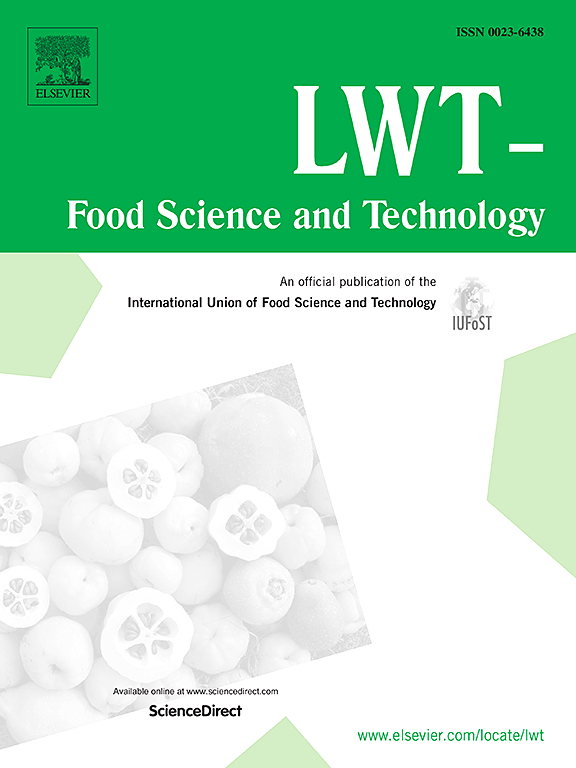Impact of drying method on sensory, physicochemical properties and biology activity evaluation of Boletus edulis soup and their changes in volatile compounds
IF 6
1区 农林科学
Q1 FOOD SCIENCE & TECHNOLOGY
引用次数: 0
Abstract
This study investigated the effects of different drying methods on the physicochemical properties and flavor of Boletus edulis soup. HPLC, UV absorption, fluorescence, antioxidant activity, and hypoglycemic and hypolipidemic activity were used to evaluate the physicochemical properties of diverse Boletus edulis soup. Simultaneously, the flavor quality was elucidated through sensory evaluation, E-tongue and HS-SPME-GC-MS. The results showed that the Boletus edulis soup from the freeze drying (FDS) and the heat pump drying (HPDS) exhibited higher level of inhibitory activities on antioxidant, hypoglycemic and hypolipidemic in vitro. Moreover, FDS was rich in pyrazines, furans, and sulfur-containing compounds, which were endowed with caramel and meaty flavors, and significantly improving umami, texture, and mouthfeel. Furthermore, the correlation analysis showed that mannose was closely related to the formation of 1-(5-Methyl-2-pyrazinyl)-1-ethanone, and xylose could promote the production of 2,3-Dihydro-3,5-dihydroxy-6-methyl-4H-pyran-4-one. These findings provided an experimental basis for flavor enhancement and deep processing of edible fungi.

求助全文
约1分钟内获得全文
求助全文
来源期刊

LWT - Food Science and Technology
工程技术-食品科技
CiteScore
11.80
自引率
6.70%
发文量
1724
审稿时长
65 days
期刊介绍:
LWT - Food Science and Technology is an international journal that publishes innovative papers in the fields of food chemistry, biochemistry, microbiology, technology and nutrition. The work described should be innovative either in the approach or in the methods used. The significance of the results either for the science community or for the food industry must also be specified. Contributions written in English are welcomed in the form of review articles, short reviews, research papers, and research notes. Papers featuring animal trials and cell cultures are outside the scope of the journal and will not be considered for publication.
 求助内容:
求助内容: 应助结果提醒方式:
应助结果提醒方式:


